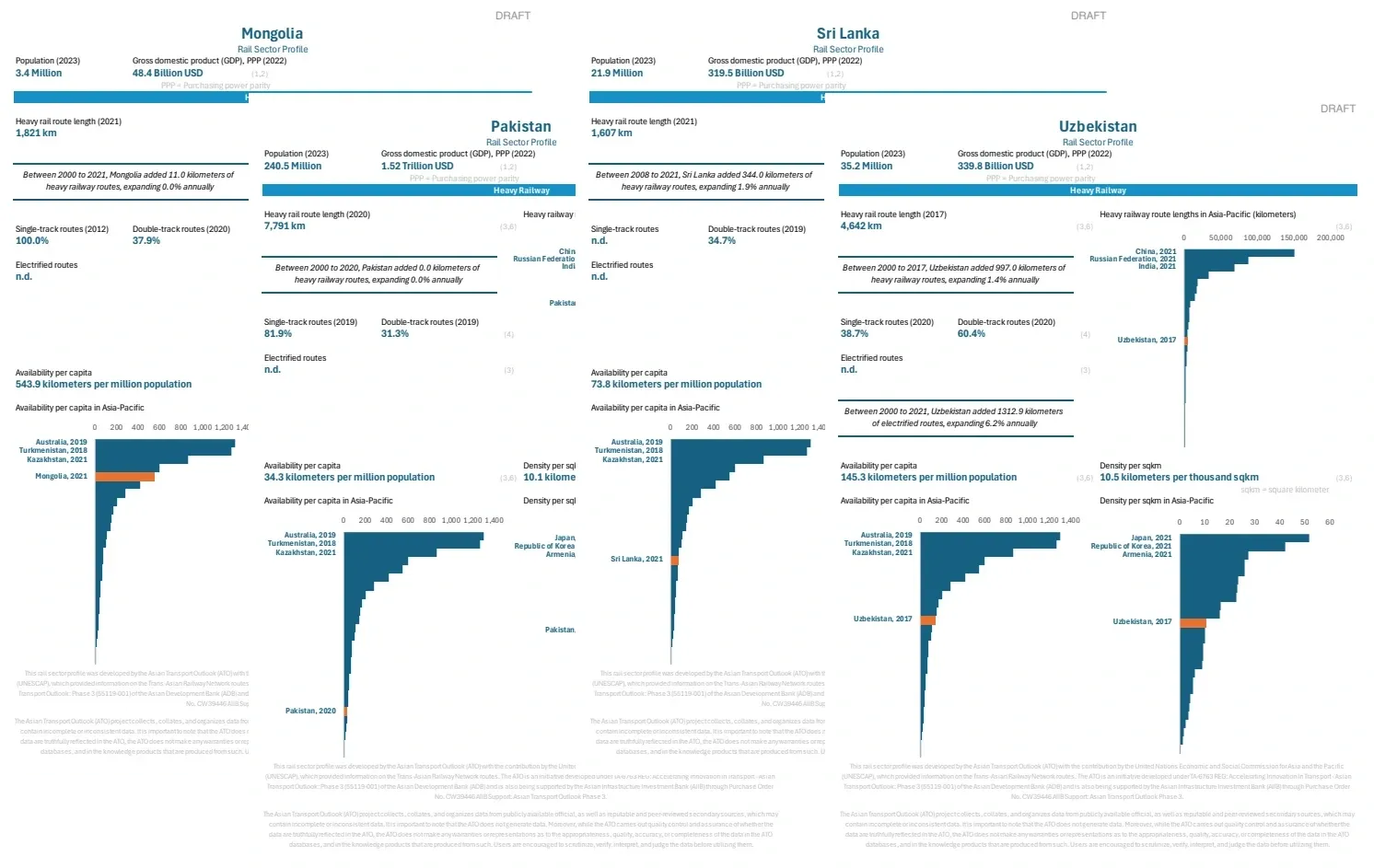ATO releases Rail Sector Profiles: Mongolia, Pakistan, Sri Lanka, Uzbekistan

We're excited to announce the release of our second set of our working profiles series: Rail Sector Profiles. These have been developed by the Asian Transport Outlook (ATO) with the contribution by the United Nations Economic and Social Commission for Asia and the Pacific (UNESCAP), which provided information on the Trans-Asian Railway Network routes.
These profiles provide insights on rail infrastructure, operations, and policy alignment across Asia, drawing from various sources.
Drawing from verified and peer-reviewed sources, the profiles provide key insights from the data and policies for enriching the discussions on advancing the railway sector in the region.
Key Features of the Profiles
Infrastructure Overview
Heavy Rail Networks: Comprehensive data on route lengths, electrification, and track configurations (e.g., single vs. double track).
Urban Transit Systems: Trends in Mass Rapid Transit (MRT) and Light Rail Transit (LRT) development across major cities.
Regional Comparisons: Infrastructure availability metrics per capita and per square kilometer.
Activity and Operational Trends
Passenger and Freight Movements: Tracking trends in passenger-kilometers (PKM) and tonne-kilometers (TKM).
Energy Use: Insights into electrification, energy efficiency, and the integration of cleaner energy sources.
Environmental Impact
Carbon Emissions: Rail's role in reducing transport CO2 emissions through electrification and efficiency gains.
Air Pollutants: Trends in reducing PM, NOx, and SOx emissions from rail transport.
Investments and Digitalization
Financial Flows: Trends in Official Development Assistance (ODA) and Public-Private Partnerships (PPPs) supporting rail development.
Digital Readiness: Assessments of technological integration and operational efficiency.
Policy Measures and Targets
National Strategies: Rail-related measures on infrastructure development, climate mitigation, electrification, and more.
The profiles are a valuable resource for policymakers, investors, and stakeholders committed to advancing sustainable rail systems and achieving regional climate goals.